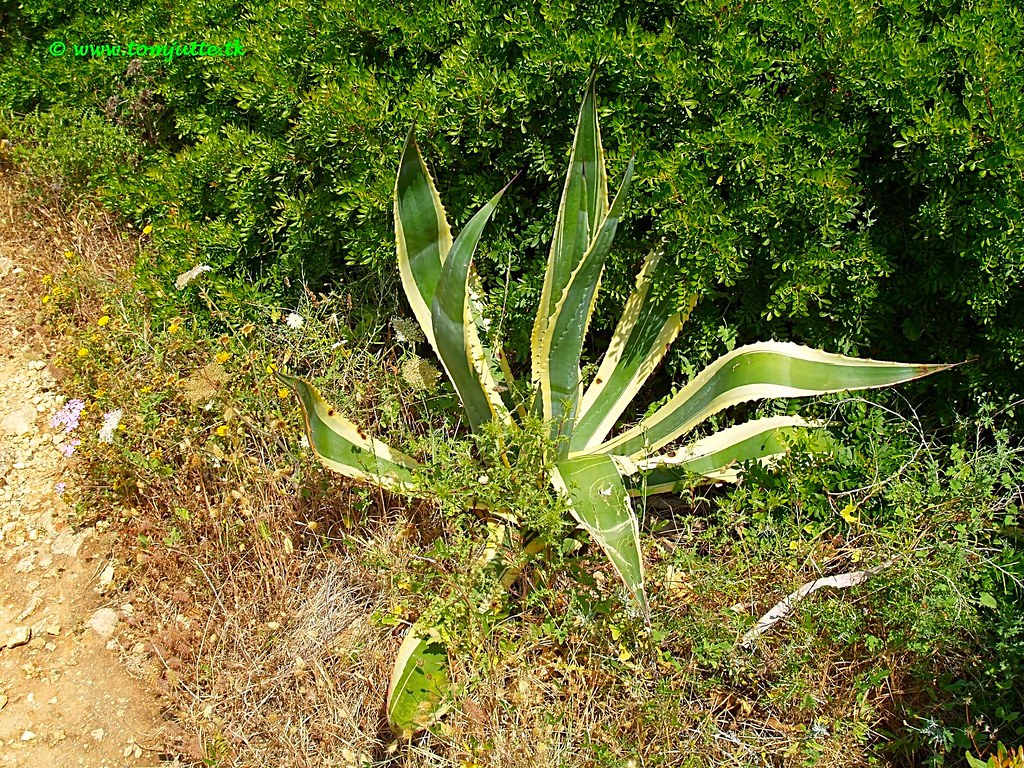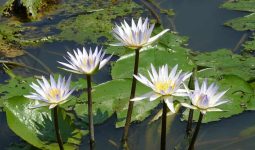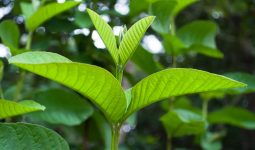There are many Agave plants, each with particular qualities that set them apart.
Agave plants are a fantastic choice if you’re looking for an attractive and adaptable succulent.
Succulent plants belonging to the genus Agave are found in hot, dry climates and some tropical ones in the Americas.
These plants typically have long, pointed leaves. This Agave care and propagation guide can provide more information on how to grow this plant.
Agaves come in several varieties with slightly different traits. The plants’ stems are round and incredibly short, barely visible.
These plants have spiked edges on their leaves for protection and produce sap. Additionally, they frequently have pups that are useful for breeding.
Furthermore, these plants typically grow from early spring to late summer. They contain various edible components, including flowers, stalks, leaves, and sap, frequently used to brew alcoholic beverages.
Without much ado, let’s move on to the different types of agave plants that we have.
1. Agave Albopilosa

The extra-small white-hair agave (Agave albopilosa) grows as solitary or grouped balls of numerous, narrow leaves.
It stands out from other members of the genus thanks to a very odd full ring of white hairlike fibers surrounding the terminal spine.
From a distance, each leaf appears to have a cotton ball-like structure at the end; however, the new leaves lack hair, while the thorny region surrounding the terminal spine resembles the tip of a triangular wooden pencil and opens like a mesocarp to reveal the snow-white fibers.
It will only expand to a diameter of about 30 cm due to its prolonged growth.
2. Agave Americana

The century plant, or Agave americana, is a medium- to large-sized, freely suckering, or solitary agave with a basal rosette up to 3 meters wide.
The best-known species is Agave americana. Its defining characteristic is the frequent reflection of the leaves above the middle.
It is a very polymorphic species that is grown in many varieties all over the world, particularly in climates with harsh winters. It thrives in both greenhouses and open fields.
3. Agave Tequilana
Blue agave is a common variety of agave plants used to make tequila. It has long, narrow, bluish-green leaves that are long and narrow, and it grows a big stalk with a bulbous top.
Warm climates are the best places to grow this agave, one of the different types of agave plants.
4. Agave Potatorum
Beautiful butterfly agave varieties frequently have pink and yellow leaf markings.
Because of their smaller size, they are a better option for those with limited space than some other agaves.
Butterfly agave is ideal for people who don’t want to frequently worry about pruning or transplanting because of its slow growth.
The butterfly agave differs from most agaves in that it has long and thin rosette-shaped leaves.
Bright white lines border the leaves, and black tips resemble butterfly wings.
Furthermore, when this agave blooms, a tall spike of yellow flowers emerges.
The plant dies after flowering, but it frequently produces offsets before it does.
A conversation starter, butterfly agave is a striking addition to any garden.
5. Agave Parrasana
Due to its hardiness, this agave is a favorite among gardeners. The cabbage head agave is a good plant for gardens in all country regions because it can withstand hot and cold climates.
Additionally, because it doesn’t need much water, it is a perfect plant for people who live in arid climates.
The cabbage head agave is a beautiful plant that can grow up to six feet tall.
Its broad, blue-green leaves cluster at the stem’s top to form a sizable rosette.
This agave blooms once every seven to ten years, sending up a tall stalk covered in yellow flowers.
Although the Cabbage Head agave grows slowly, it can live up to fifty years.
6. Agave Angustifolia
The Caribbean agave is a popular option for those who want a fast-growing agave.
This variety is ideal for those looking for a large statement plant because it can grow up to six feet tall. It thrives in direct sunlight and needs frequent watering.
The succulent known as Caribbean agave is indigenous to Mexico and Central America.
Full sun and dry climates are ideal for its growth. The leaves of the Caribbean agave are long, narrow, and gray-green in hue.
Caribbean agave grows a tall flower stalk with clusters of yellow flowers at the top.
It can withstand drought and adds beauty to a landscape or garden.
7. Agave Applanata
A medium-sized species known as Agave applanata typically grows alone or in a few offsets, producing extremely stiff pale blue leaves with contrasting dark spines.
8. Agave Desserti
Desert agave is a popular option for those who want an agave that will flourish in hot, dry climates. This variety can withstand high and low water levels and is incredibly tough.
It is also pest—and disease-resistant, making it a wise choice for people who reside in areas with these issues.
Furthermore, the Desert agave is a lone plant that can reach 12 feet. Its long, spiny leaves and grayish-green trunk characterize it.
After it flowers, the inflorescence can grow to a height of 18 feet, which can take up to ten years.
The flowers only bloom for one night and are pollinated by bats. The flowering agave eventually dies. This is one of the different types of agave.
9. Agave Attenuata
Agave attenuata, the Fox Tail Agave, grows smooth, curving trunks that are frequently branched.
Over time, old leaves eventually fall off, leaving the boxes exposed.
If cultivated in the ground, it will probably grow as a 90 to 120 cm tall clump and even wider, with numerous leaf rosettes (unusual among agaves). In contrast to its prickly cousin, this plant lacks spines.
10. Agave Salmiana Ferox
A ferocious giant agave is a popular option for those looking for an agave that will stand out.
The tallest agave variety currently in existence, this one can grow up to 25 feet tall. It thrives in direct sunlight and needs frequent watering.
11. Agave Blue Ember
Agave Blue Ember, a medium-sized succulent, was created through tissue culture.
It has smooth red edges and red terminal spines on its dark blue-green leaves.
It makes lovely prints on the undersides of its leaves, which makes it an even more lovely plant.
Given that it does well in hot, dry climates, it is an excellent plant for xeric gardens. This is one of the different types of agave.
12. Agave Boldinghiana
Agave boldinghiana is a medium-sized agave-forming rosette that is extremely attractive, nearly stemless, and has dark red spines on the leaves, even at a very young age.
It offsets easily and creates dense mounds. Also, this plant belongs to the Viviparae section and, like other family members, produces plantlets, also known as bulbils in botanical terms, in the inflorescence.
13. Agave Bovicornuta
The Cow Horn Agave, also known as Agave bovicornuta, is a perennial medium-sized, non-suckering plant with a short stem that forms a single, open, light green rosette that typically grows wider than it does tall.
It can reach a maximum height and width of up to 80–100 cm and 1.5–2 m, but it is frequently smaller.
Its large size and decorative, bright green, broadly lanceolate or spatulate leaves, which are 45–60 cm long and 10-15 cm wide, make it easy to identify.
The most desirable varieties have large, spoon-shaped leaves with wickedly delicious teeth.
After the plant reaches an age of 10 to 12 years, yellowish-green flowers appear on a stalk that can reach a height of 5 to 6 meters.
14. Agave bracteosa
Agave bracteosa is a solitary or clumping rosette that is also referred to as “spider agave” or “squid agave.”
Its succulent green leaves are long and lanceolate, measuring 50–70 cm long and 3-5 cm wide at the base, making it one of the smallest agaves. It forms 1.2 m across clusters. There are patterned forms.
15. Agave Stricta
A hedgehog agave is a well-liked option for those who want an agave that will survive in hot, dry climates.
This variety can withstand high and low water levels and is incredibly tough.
It is also pest—and disease-resistant, making it a wise choice for people who reside in areas with these issues.
16. Agave Montana
A mountain agave is a standard option for those who want one that will survive in cold climates.
This hardy variety can tolerate temperatures as low as -20 degrees Fahrenheit. It thrives in direct sunlight and needs frequent watering.
17. Agave Vilmoriania
An octopus agave is a well-liked option for those who want an agave that will grow quickly.
This variety is ideal for those looking for a large statement plant because it can grow up to six feet tall. It thrives in direct sunlight and needs frequent watering.
18. Agave Titanota
Agaves that can survive in hot, dry climates are in high demand, and Rancho Tambor agave is one such variety. This variety is incredibly tough and can withstand high and low water levels.
It is also pest—and disease-resistant, making it a wise choice for people who reside in areas with these issues.
19. Agave Shawii
Shaw’s agave is a well-liked option for those who want an agave that will survive in cold climates.
This hardy variety can tolerate temperatures as low as -20 degrees Fahrenheit.
It thrives in direct sunlight and needs frequent watering. This is one of the different types of agave plants.
20. Agave Sisalana
Sisal agave is a well-liked option for those who want one that will flourish in hot, dry climates.
This variety can withstand high and low water levels and is incredibly tough.
It is also pest—and disease-resistant, making it a wise choice for people who reside in areas with these issues.
Agave plants of the sisal variety are renowned for their toughness and endurance.
Because they can withstand a lot of abuse, they are frequently used to construct furniture and other items.
However, due to their sharp point, sisal can be dangerous if you’re not careful. Exercise caution when working with sisal.
21. Agave Parviflora
A small flower agave is a common option if you want a fast-growing agave.
This variety is ideal for those looking for a large statement plant because it can grow up to six feet tall.
It thrives in direct sunlight and needs frequent watering. This is one of the different types of Agave.
22. Agave Desmettiana
A smooth agave is a popular option for those who want one that will flourish in hot, dry climates.
This variety can withstand high and low water levels and is incredibly tough.
It is also pest—and disease-resistant, making it a wise choice for people who reside in areas with these issues. This is one of the different types of agave.
23. Agave Lophantha
For those looking for an agave that can survive in cold climates, the Thorncrest century plant is a well-liked option.
This hardy variety can tolerate temperatures as low as -20 degrees Fahrenheit. It thrives in direct sunlight and needs frequent watering.
Agaves of the Thorncrest Century Plant variety are distinguished by their enormous size.
It has broad, sword-like leaves and can reach heights of six feet. Although this agave grows slowly, it can live up to fifty years.
The Thorncrest Century Plant blooms once every ten years, producing lovely orange-yellow flowers.
This agave grows well in hot, sunny climates and is tolerant of drought.
24. Agave Filifera
Thread-leaf agave is a common selection for those looking for an agave that will survive in hot, dry climates.
This variety can withstand high and low water levels and is incredibly tough.
Moreover, it is also pest—and disease-resistant, making it a wise choice for people who reside in areas where these issues are prevalent. This is one of the different types of agave.
25. Agave Geminiflora
If you want a fast-growing agave, twin-flowered agave is a common option.
This variety is ideal for those looking for a large statement plant because it can grow up to six feet tall. It thrives in direct sunlight and needs frequent watering.
The Twin-Flowered Agave is a striking succulent with tall, sword-like leaves and small, pink flowers.
Also, this agave can be grown in the ground or in a container, making it ideal for gardeners looking to add something exotic to their landscape.
Furthermore, twin-flowered Agaves are drought tolerant once established and prefer full sun, though they can tolerate some light shade. They can be multiplied through stem cuttings or division.
26. Agave Ovatifolia
Many people choose a whale’s tongue agave when looking for an agave that can survive in cold climates.
This hardy variety can tolerate temperatures as low as -20 degrees Fahrenheit. It thrives in direct sunlight and needs frequent watering.
The broad, emerald-green leaves of the Whale’s Tongue Agave taper to a point.
This agave can reach a height of six feet and blooms in the spring with a substantial flower stalk.
Bats and hummingbirds pollinate the flowers, and the resulting fruit is edible. Also, agaves with a whale’s tongue are drought-resistant and a lovely addition to any garden.








